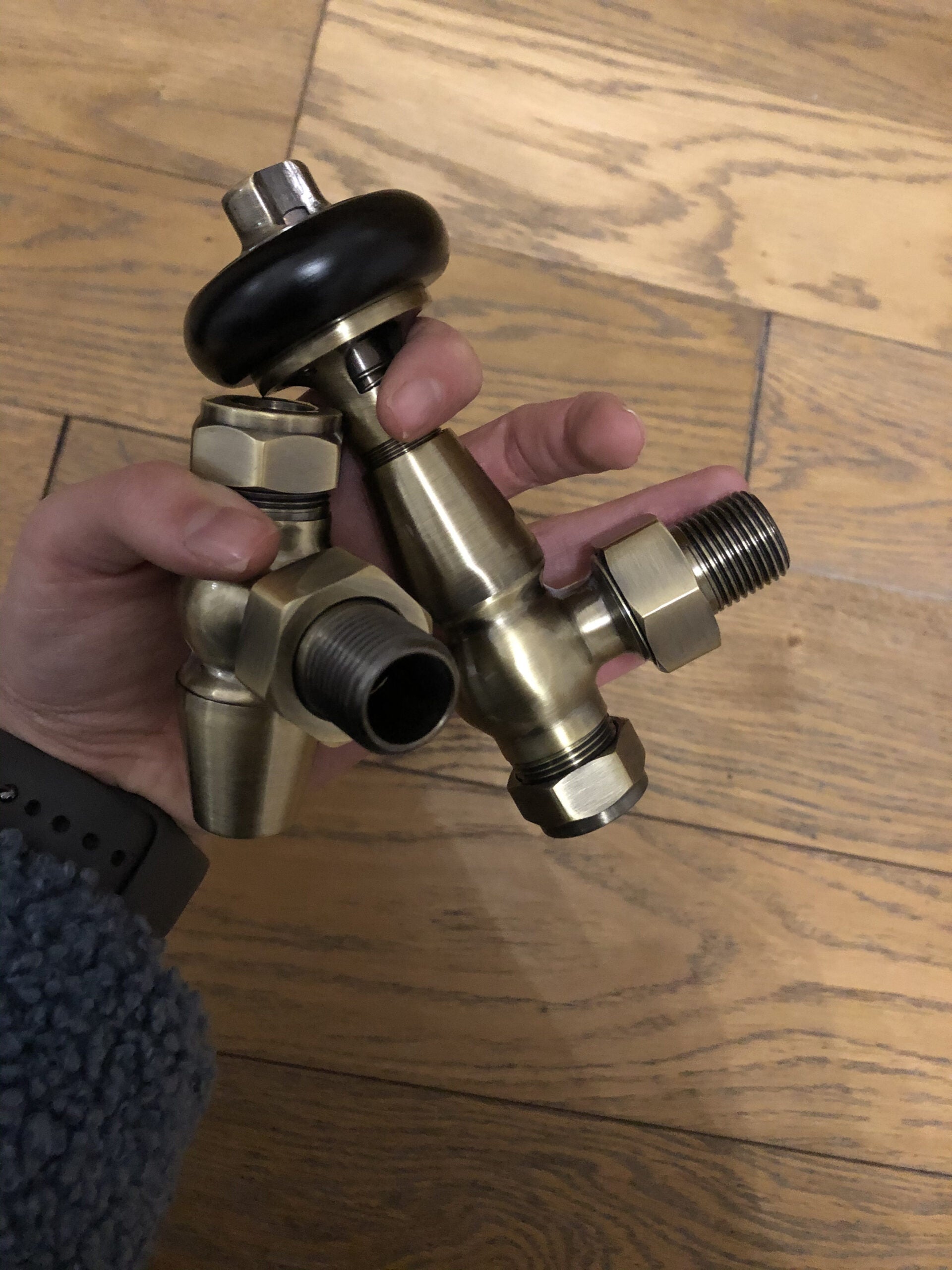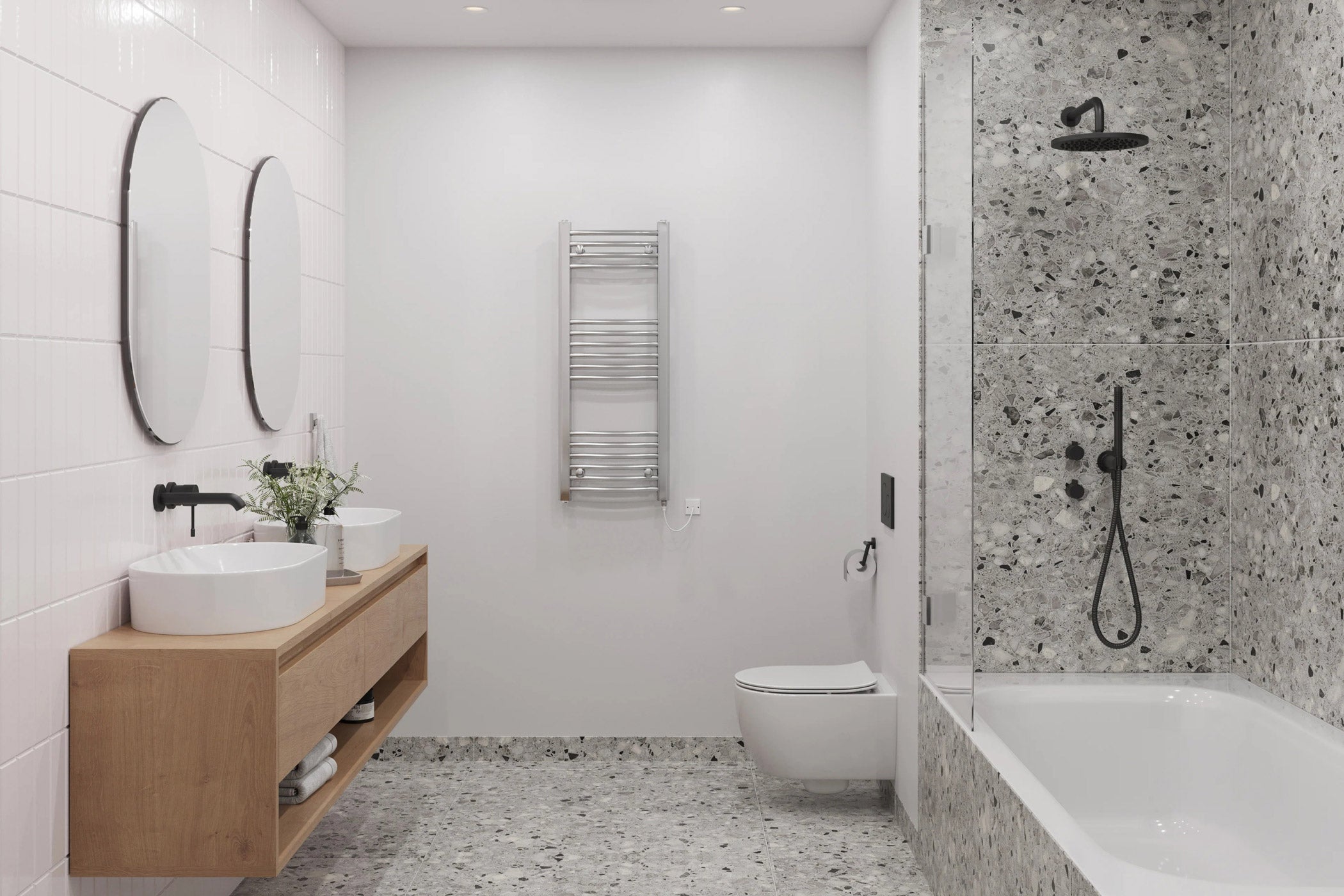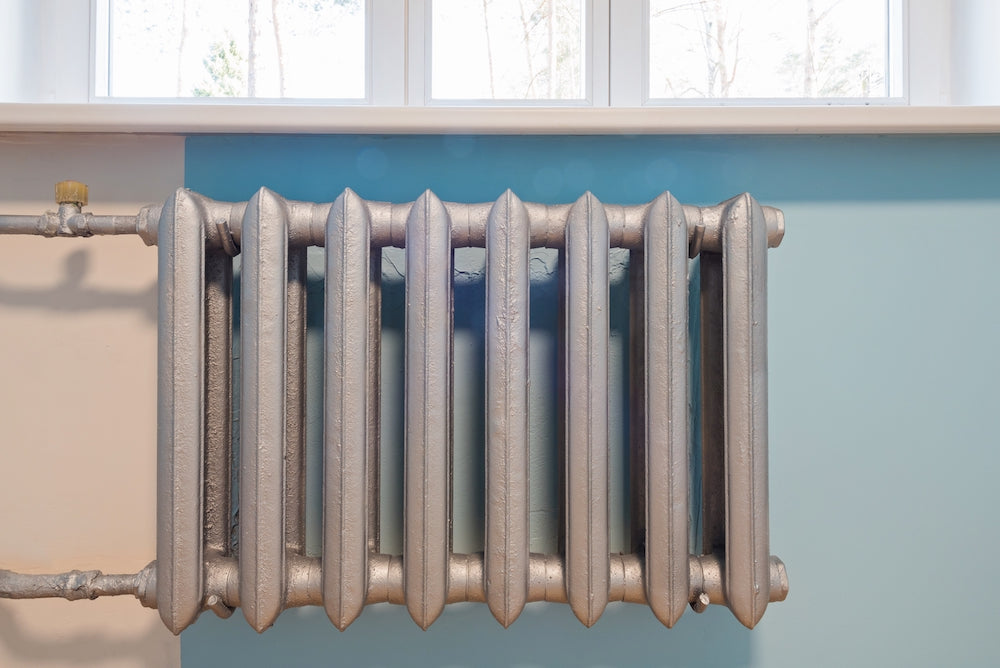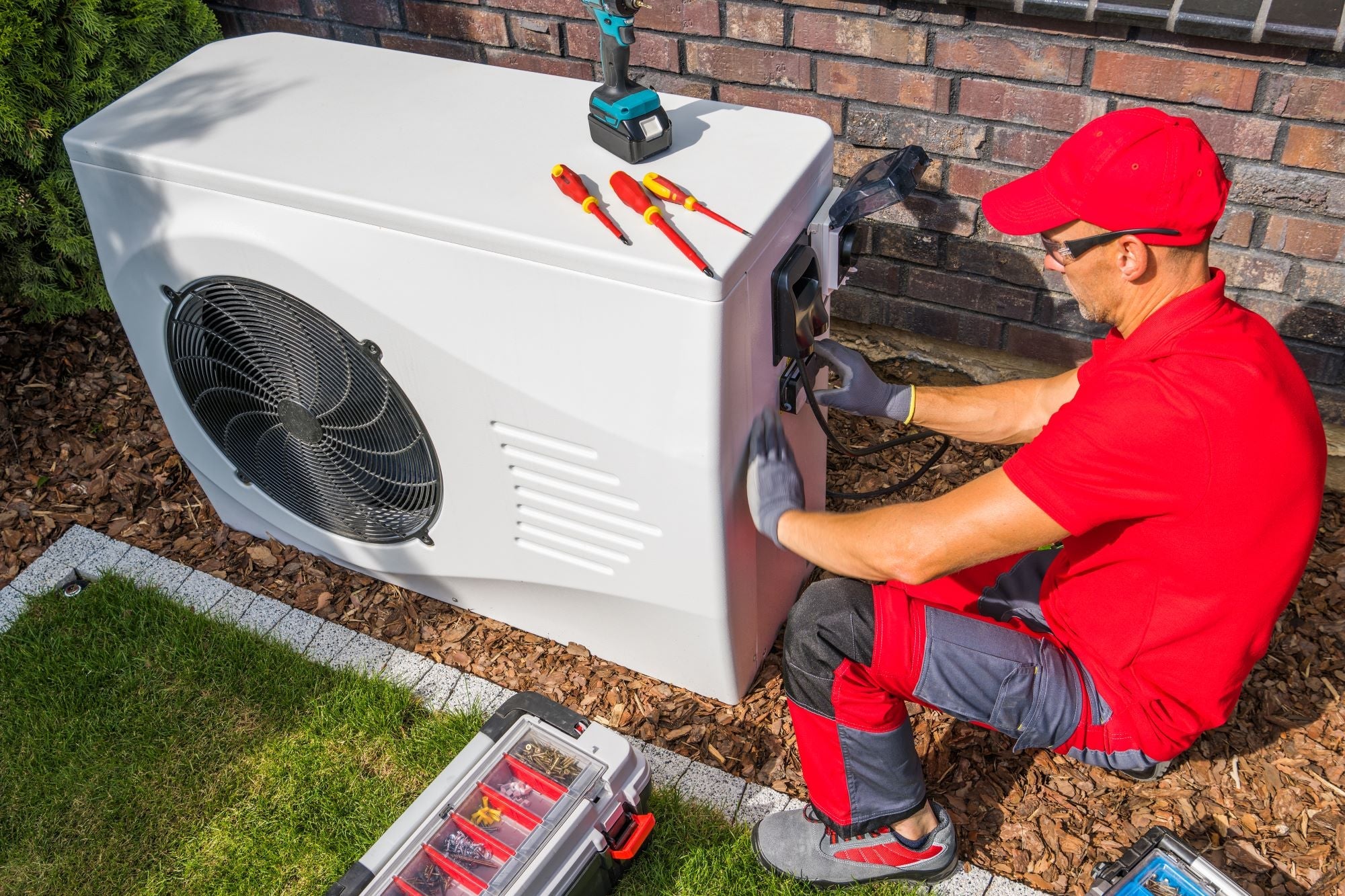
The Ultimate Guide to Radiator Valves
When it comes to picking the right radiator valves for your rad, “one size fits all” just won’t cut it. Whilst a lot of the Google search results for this topic will include something along the lines of “Most homes have angled radiator valves” or “corner radiator valves”, the reality is that every home, and heating system, is unique. And we here at UK Radiators appreciate that fact. The valves you need in place will vary depending on the specifications of your radiator and home, as they relate to the positioning of the pipes in relation to the valve connections. Sounds confusing, right? But not to worry, that’s why we’re here to help. Our guide to radiator valves will not only let you know which radiator fittings you need, but is complete with diagrams to help you identify whether those valves will fit within your installation. First, let’s talk about your home. There are two main factors that will define the valve you need, the pipe system you have in your home and the connection points on the radiator.
What is the pipe system?
The pipe system is the way your pipes run throughout your home. They could be buried within the wall, under the floorboards, or they could be fully external, running along the walls of your home and in plain view.
Why are there so many different pipe structures?
Well, personally, we blame people from the 1800s for not having the foresight that we, almost 200 years later, would build homes with pipes buried in the wall. I mean, come on, would it be that hard to imagine? But back to the main point here, our homes are a central point of our lives, and their design has developed over centuries, meaning the architecture and functionality of each home in the UK differs depending on when it was built. This means that when it comes to your homeware such as radiator fittings or pipework, a one-size fits all approach simply won’t cut it. We understand that, which is why our radiator valves cater for all home types and styles, whatever your needs and specifications.
What are the different radiator connections?
Commonly, there are side connections or bottom connections, depending on how your radiator has been designed to connect to your pipework.
So how do you match your radiator to your pipe system?
The simple answer is ‘that’s what we are here for!’ We’re here to help you get to the right valve for your radiator and heating system, so without further ado, let’s get this valve situation in hand and sorted.
Types of radiator valves
Functionally, there are three main types of radiator valves in terms of how they work: Smart, Thermostatic and Manual. But don’t let the names fool you, they all have a significant and defined purpose in your home, and you need to know about all three. Shape wise, we have three main formats: angled, straight and corner. These are the options that get your radiator connected to your pipe system. But before we go onto that, let's talk about the most important one, the lockshield valve.
Lockshield Valves
This small, insignificant looking valve is probably the most important aspect of your heating system, and every radiator needs one. Without this little valve (which you can see on the right hand side on the image below, courtesy of Dean, one of our customers), the radiators in your bedroom or any room furthest away from the boiler will never get warm.
So how do you pick the one you need?
Don’t worry, we know you need it. We saw it coming, so every valve set you purchase from us includes a lockshield valve too. If you purchase radiator valves from us, this is not something you need to worry about, you can see how to use this important aspect of this valve in our blog about balancing radiators. But let’s get to the important bit, the pipe system vs the radiator connection.
How your radiator valves function
So you may have been told that installing thermostatic radiator valves in your rooms is the best way to go because you can save on heating bills. While this is true, there is always at least one room that needs a manual valve in your home, so let’s start with how your radiator valves function before we go onto shape and pipe connections.
How do manual radiator valves work?
Why do it manually, when you can do it technically, you ask? Simple; because two pieces of technology trying to do the same thing can conflict with one another. 
What this means is, in this case, that where you have a room that has the main boiler thermostat control (usually a little box on the wall or the mantle, that you turn up and down) and a radiator valve in the same room, using a thermostatic radiator valve in this scenario causes the two pieces of technology to collide and conflict. So, manual radiator valves are very useful in their required scenarios, which we have listed below for their common uses and considerations. Use manual radiator valves:
- When the radiator is in the same room as the boiler control thermostat
- In rooms where you don’t want the heating to shut off early as you remove your extra thermal protection when using that room (for example, the bathroom, else you may get a cold bottom!)
Thermostatic radiator valves
Otherwise known as a TRV, thermostatic radiator valves give you more functionality over a manual valve. 
So, what is the benefit of thermostatic radiator valves over manual? Well, comfort, mother nature and of course - wallet size! Our recommendation is that, where a room doesn’t need a manual valve, it should have a thermostatic radiator valve.
So how do thermostatic radiator valves work?
Thermostatic radiator valves have clever little mechanisms, sometimes using liquid or wax, that will shut off the flow of hot water to a specific individual radiator when the room temperature is at its desired level. Installing thermostatic radiator valves is like having a boiler thermostat control in every room, and while they don’t interact with the boiler directly, they heat up your radiators quicker by shutting off the water supply to their radiator earlier. This means your boiler goes off quicker, thereby saving you money, reducing your carbon footprint and reaching your desired comfort level - all in one go. In addition, to all of that, good thermostatic radiator valves will have a frost prevention mode, which automatically opens the valve a little bit, even when fully switched off if the temperature of the room drops below a certain level. This prevents your heating system, radiator and pipes from becoming damaged by stopping the water in the radiator and pipes from freezing. They are also a common low-cost suggestion for improving EPC ratings (Energy Performance Certificates for homes). All of our thermostatic radiator valves come with a lockshield valve and Frost Prevention Mode.
Smart radiator valves
If you thought that thermostatic valves were the best you can get when it comes to heating technology, think again. Smart radiator valves are the newest developments in home heating systems, and give you complete and flexible control over your heating. Forget simply just heating up your rads to the temperature you set them to, these radiator fittings know when you want them to turn on and off too! 
This piece of tech is not for everyone, but definitely worth considering. After extensive consideration, we’ve landed on the Radbot for our recommendation.
What you need
It is important to note that this is an addition to thermostatic radiator valves, so what you do is purchase your TRV from us, and then get this nifty little one, which comes with 7 adaptors to ensure it will fit on any of our thermostatic radiator valves.
Why we recommend the Radbot
When you replace the heads of thermostatic radiator valves with the Radbot, it can not only control the room temperature, but learn the needed temperature too. Using motion sensors to detect people in the room, it will learn the times of day that you need the room to be warm and consequently, turn the valve on and off based on what it has learned about you. The temperature that you want the room at is still set by you though. There’s some serious energy saving potential there - so good in fact - the Radbot won the National Energy Efficiency Awards 2019 Product of the Year and is Endorsed by The Energy Saving Trust. It boasts an impressive potential reduction of up to 30% in your heating bills! On top of that, this device comes with a 30 minute boost button, which will let you get a blast of heat in the room should you need it. After all, a valve shouldn’t dictate when you can and can’t use a room! Our favourite bit about the Radbot is, there is no set up required, and we believe it is the easiest to use and install smart valve head on the market. The best thing about the Radbot is its versatility - you can use this smart valve whatever your pipe system and radiator connection type, provided it is used on a thermostatic radiator valve. But no matter your choice of valve, be it manual, thermostatic or smart, before you make the final decision, we need to talk about the shape of your radiator valves.
The shape of your radiator valves matter
Now you know how each of our radiator valves can function, it’s time to connect our radiator to our pipes. To do this, we need the right valve shape, so let’s look at the best uses for different radiator valve shapes.
Angled radiator valves
Angled valves are more commonly used where the pipe comes out of the floorboard, and the radiator connector is on the side. 
They are also used when the pipe comes out from the wall and bends up, and the radiator connector is on the side. However, sometimes you can use one of these where the pipes come out of the wall and the radiator connection is on the bottom, but the valve itself will protrude in front of the radiator, so where this is the case, we recommend corner radiator valves. All of our angled radiator valves come with matching shaped lockshield valves too in a range of styles, so you can keep your room’s aesthetic consistent, right down to the radiator fittings!
Corner radiator valves
Corner radiator valves are your go-to valve where the pipes come out of the wall as they can fit perfectly onto your rad. 
Straight radiator valves
Straight radiator valves are the ideal valve for older homes built before the modern home building styles of today. These are a simple but true saviour to bring older homes into the modern era, and not to be underestimated. You use straight radiator valves in the following scenarios:
- Where the pipes run from the floorboard up to the radiator, and the radiator connection is on the bottom.

- Where your pipes run along the skirting board, and connect to the side.

- Where your pipes run down from the ceiling and bend round to meet the radiator on the side.

- Where pipes come out of the wall, and bend round to meet the radiator on the side.

- Where pipes come out of the wall, and bend up to meet the radiator on the bottom.

In simple terms, it is where you want a straight-line connector from pipes to radiator.
These still don’t work, what else is there I need to know?
Well, like we said at the start, there is a huge variety of homes and pipe systems out there, all with pipes that bend in different directions, so let’s cover how we know the above fittings will equip you with everything you need to make the decision that suits your home. So first off, are the radiator connectors on the side or on the bottom? Now let’s imagine that the valve is connected to the radiator, in this example let’s say an angled valve. The goal is to have the valve as flush as possible with the radiator, so ideally we don’t want it sticking out in front of the radiator. 
So the key here is to imagine the radiator in place with the valve attached, then think about how that valve would actually work with your pipes given the direction that they run from above, below, side or wall.
One last thing to consider
Our radiator valves will fit all rads and towel rails in the UK, so the only other thing to consider is your pipe size. Our valves come in pipe connection sizes of 8mm, 10mm and 15mm which you will need to match with your pipes. Other than this, we have a huge range of colours, finishes and styles for you to choose from so you can match your radiator valves to the style of your radiator, and room. And there you have it. Everything you need to know about radiator valves. Now you’ll be equipped with all the info you need to pick your perfect valves. So, what are you waiting for? Start shopping now.










